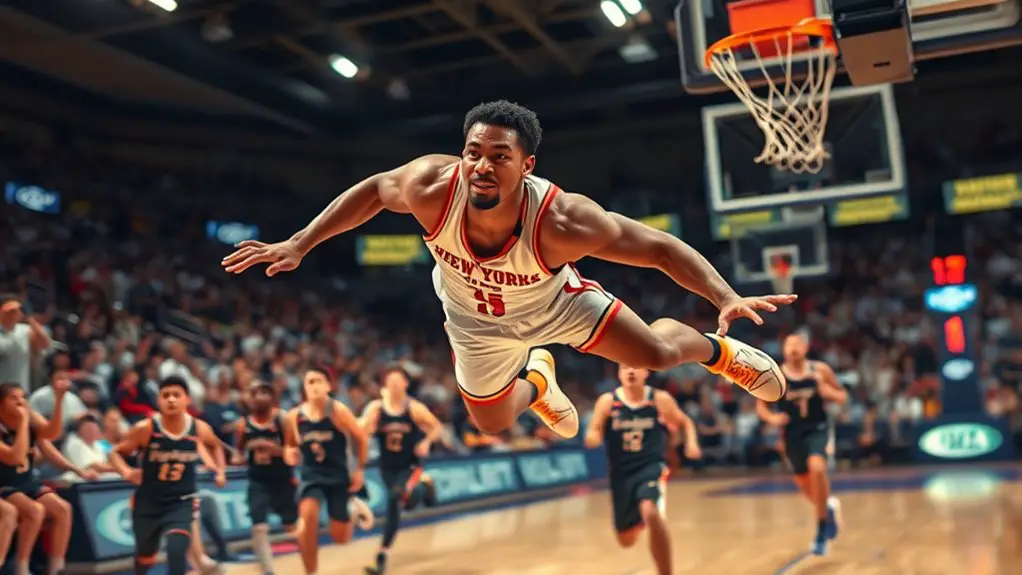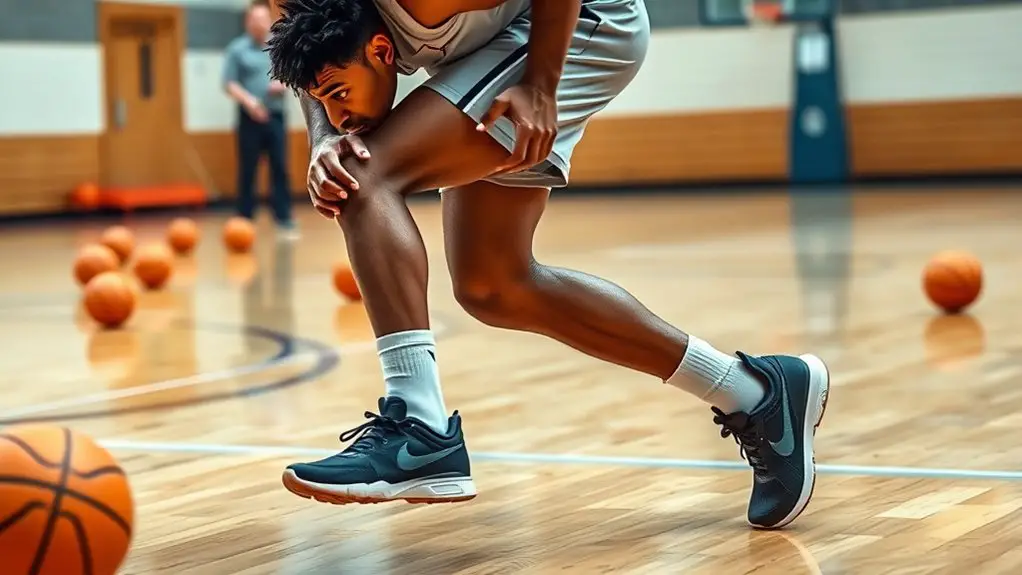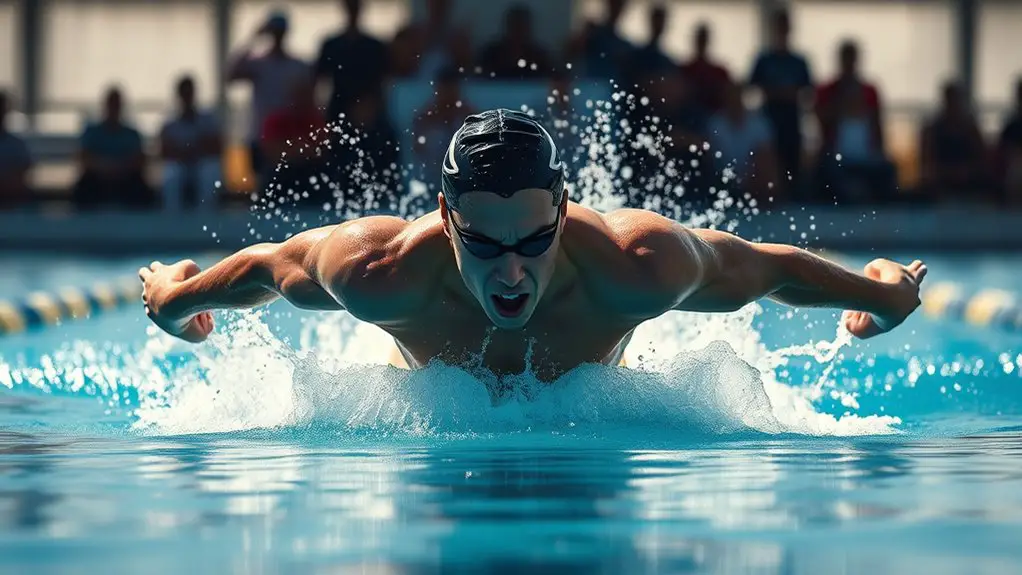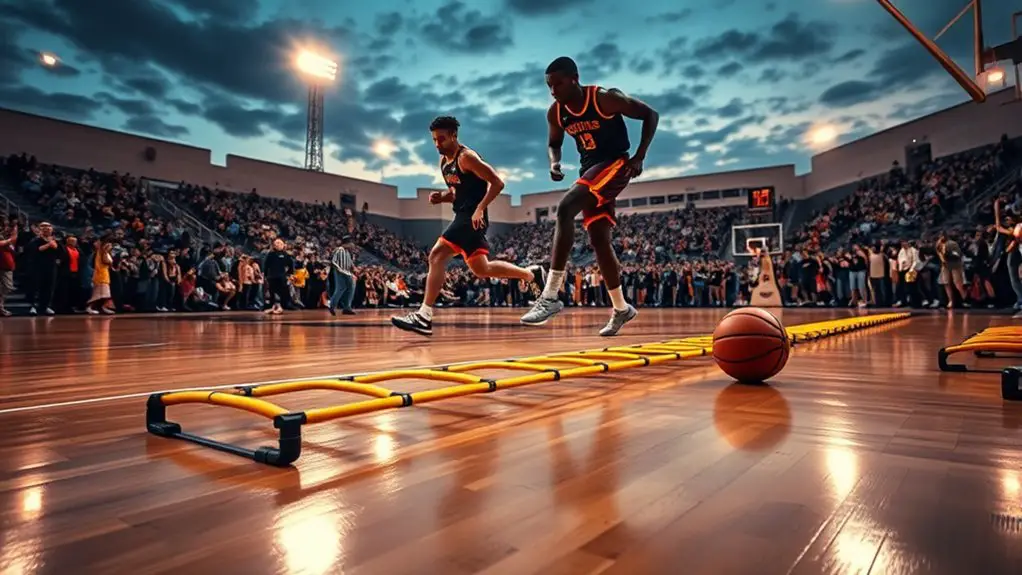Reaction speed plays an essential role in fast breaks and shifts in basketball. When you can process information quickly, you capitalize on defensive lapses, leading to scoring opportunities. Your ability to make split-second decisions can shift the game's momentum, helping you exploit weaknesses in the opposition. It's not just about speed; it's about anticipating plays and executing fluid movements. Want to enhance your gameplay and discover more techniques? Keep exploring the ways to sharpen your reaction skills.
Understanding Reaction Speed in Basketball
When you're on the basketball court, understanding reaction speed can be the difference between scoring and being scored on. Your reaction time isn't just about how fast you move; it's about how quickly you process information. In the heat of a fast break, every second counts. You need to anticipate your opponent's moves and respond accordingly, relying on your cognitive processing to make split-second decisions.
Imagine a defender closing in. If your reaction speed is sharp, you can either drive to the basket or pass to an open teammate. But if your mind lags, you might miss that golden opportunity. Practicing drills that enhance your reaction time can empower you on the court, giving you the freedom to play aggressively and creatively. Incorporating mental conditioning techniques into your training can further sharpen your cognitive responses. Embrace the challenge, sharpen your skills, and let your reaction speed elevate your game. In basketball, quick thinking and swift actions can liberate your potential.
The Role of Reaction Speed in Offensive Strategies
As you navigate the complexities of offensive strategies in basketball, your reaction speed becomes a crucial asset. It's not just about executing plays; it's about feeling the game's pulse and seizing opportunities. Reaction speed influences how you adapt your offensive formations and implement strategic spacing. Here's why it matters:
Reaction speed is essential in basketball, transforming plays into opportunities and enhancing your team's offensive flow.
- Quick Decisions: Your ability to make split-second choices can shift the momentum in your favor.
- Seizing Gaps: Fast reactions help you exploit defensive weaknesses and create scoring opportunities.
- Fluid Movement: You can adjust your positioning with agility, maintaining ideal spacing for your teammates.
- Dynamic Plays: When you react swiftly, you can initiate unexpected plays that leave defenders scrambling.
Additionally, engaging in agility drills can significantly enhance your reaction speed, making you more effective during fast breaks. Embrace your reaction speed as a cornerstone of your offensive strategy. It's the key to revealing your team's potential and achieving that exhilarating freedom on the court.
Defensive Strategies That Require Quick Reactions
While mastering offensive plays is vital, defensive strategies that require quick reactions are equally essential for success on the court. Your ability to make split-second decisions can turn the tide of a game. Here are some key defensive strategies that demand your attention:
| Strategy | Description |
|---|---|
| Defensive Positioning | Stay alert and maintain a strong stance. |
| Anticipating Passes | Read the offense to intercept passes. |
| Closeouts | Quickly approach shooters to contest shots. |
| Switching | Adapt swiftly to changes in offensive setups. |
| Help Defense | Provide support when teammates are beaten. |
Incorporating these strategies means you'll need to make quick adjustments based on the flow of the game. Embrace the freedom of movement and stay engaged—your defensive prowess will shine through! Practicing mindfulness in athletic performance can significantly enhance your ability to react swiftly and effectively during critical moments.
Training Techniques to Improve Reaction Speed
To enhance your reaction speed on the court, incorporating targeted training techniques is essential. By focusing on specific drills and exercises, you can access your full potential and embrace the freedom of movement that comes with quick reactions. Here are four techniques to evaluate:Enhancing your reaction speed on the court is vital; targeted drills unlock your potential and boost movement agility.
- Reaction Drills: Partner up and have them call out commands or signals. Your goal is to respond instantly and accurately.
- Agility Exercises: Use cones or ladders to improve footwork and coordination, making your movements sharper and quicker.
- Ball Drops: Have a partner drop a ball while you focus on catching it as fast as you can, honing your hand-eye coordination.
- Shadowing: Mimic a teammate's movements to anticipate their actions and improve your overall reaction time. Additionally, incorporating agility drills can further enhance your ability to change direction rapidly during fast breaks and transitions.
Real-Game Scenarios Highlighting Reaction Speed
When a fast break unfolds, split-second decisions can make the difference between scoring and losing possession. Imagine this: you're sprinting down the court, your teammates are racing alongside you, and the defense is scrambling to catch up. You spot an open player at the three-point line. Do you pass, shoot, or drive to the basket? Each option requires rapid assessment and instinct.
In another scenario, you intercept a pass. Immediately, you've got to decide whether to push the pace or set up for a more strategic play. Every second counts in these moments. If you hesitate, the defense will recover, and your opportunity may vanish.
These real-game situations highlight how imperative reaction speed is during fast breaks. The ability to make quick, informed decisions not only enhances your gameplay but can also lead your team to victory. To improve your reaction time, trust your instincts and embrace the thrill of the fast break!
Frequently Asked Questions
How Does Age Affect Reaction Speed in Basketball Players?
Think of reaction speed as a finely tuned engine, where youth development fuels the fire. As you age, the aging effects can temper that engine's responsiveness, making it less agile on the court. While younger players often react quicker, experience can balance this out in older athletes. Embracing training and maintaining fitness can help you preserve that spark, allowing you to play with the freedom and flair you've always cherished.
Can Nutrition Impact a Player's Reaction Speed?
Absolutely, nutrition can impact your reaction speed. Timing your carbohydrate intake before games can give you that extra energy boost, helping you react quicker on the court. Plus, staying properly hydrated is essential; dehydration can slow you down and affect your performance. Implementing smart hydration strategies, like sipping water regularly, keeps your mind sharp and body ready to respond. So, fuel yourself right, and you'll feel the difference when it counts!
What Mental Exercises Improve Reaction Speed?
If you're looking to enhance your reaction speed, consider cognitive drills and visualization techniques. Picture perfect plays in your mind, imagining every movement and decision. This mental rehearsal sharpens your focus and fosters fluidity. By practicing purposeful puzzles and quick-thinking challenges, you'll boost your brain's ability to respond rapidly. Remember, it's all about training your mind to react swiftly, so embrace these exercises and unleash your potential for freedom on the field!
Do Different Positions Require Varying Reaction Speeds?
Absolutely, different positions do require varying reaction speeds. As a point guard, you've got to master quick decision-making and anticipate plays, highlighting the dynamics of your role. On the other hand, a forward needs agility to respond to fast-paced situations and rebound effectively. Each position demands a unique blend of speed and awareness, so tailoring your training to your specific role can enhance your overall game and give you that freedom to excel.
How Can Fatigue Influence Reaction Speed During Games?
Fatigue can seriously impact your reaction speed during games. When you're tired, your body's slower to respond, making it tough to keep up with the pace. That's why effective fatigue management is essential. Incorporating recovery strategies like proper hydration, nutrition, and rest can help maintain your energy levels. By staying on top of your recovery, you'll enhance your performance and guarantee that you're ready to react swiftly when it matters most.




